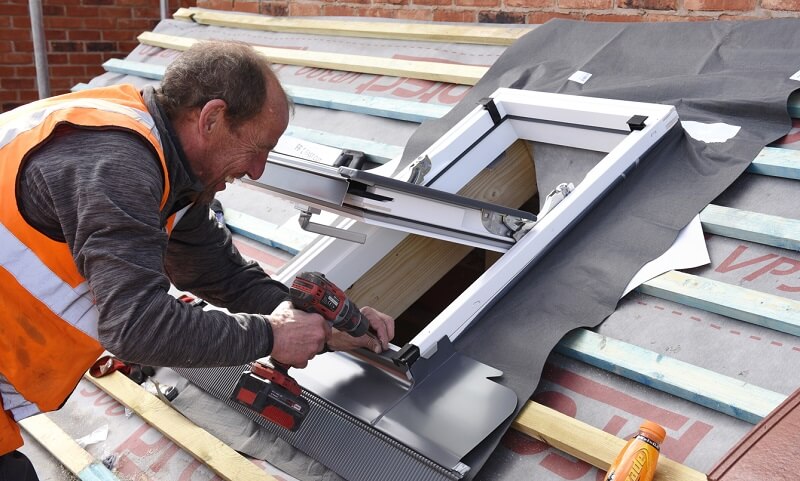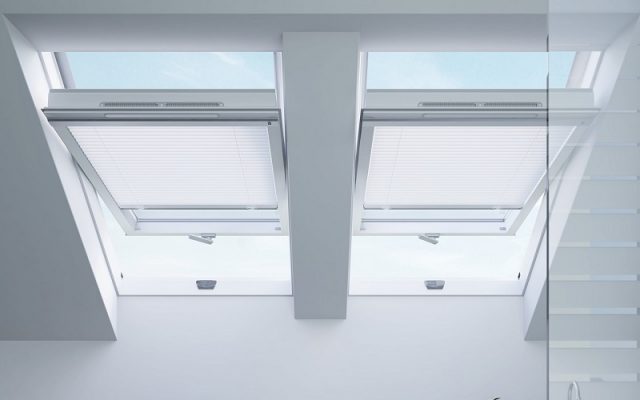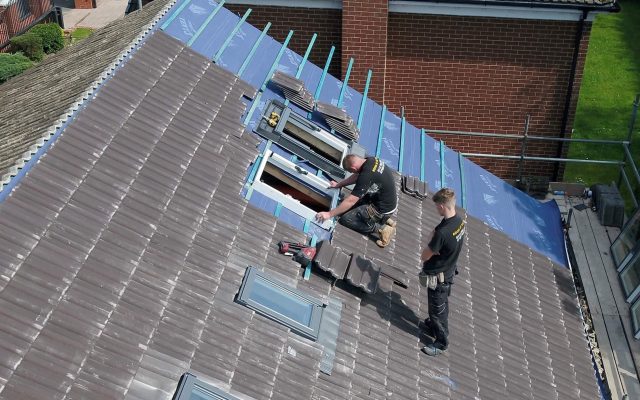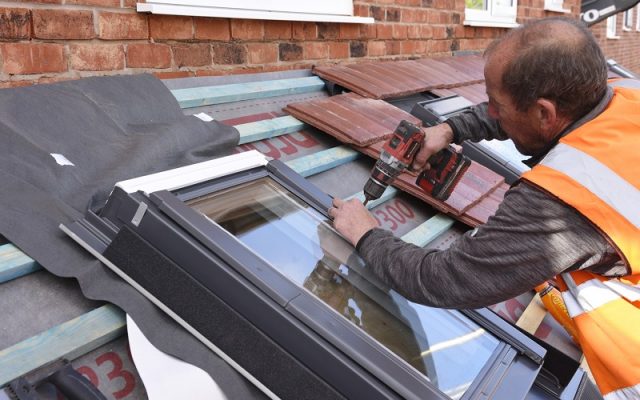Roof flashing is a thin material that roofers and builders use to waterproof areas of the roof, particularly areas that are at risk of leaks. Flashing directs water away from at-risk areas (such as where the roof plane meets a vertical surface) and allows it to flow off the roof and into the gutter.
There are a wide range of roof flashing types that are used in different contexts. Some are designed for roofers to install around features such as chimneys, roof windows and vents. Others are designed to protect the roof where it meets the house wall.
Already know what you need? View our flashing range.
Dakea have put together this simple guide on roof flashing types. If you’re a professional, find out more about the support Dakea can offer you on our housebuilder support or window installer support pages.
Types of Flashing
There are many types of flashing available that serve different purposes.
General roof flashing
These types of flashings are used in roofing applications. Many flashings for specific feature installations, such as roof windows or chimneys, are made up of a few of these types.
Continuous flashing – This is primarily used to provide waterproofing where the roof meets a vertical wall. Sometimes called ‘apron flashing’, it’s a single, long piece of flashing that acts like an apron. It carries water down to the shingles.
It’s worth noting that two-part flashing is often preferred to continuous flashing as it allows for movement as the house contracts and expands during different seasons, reducing the risk of breaks.
Step flashing – Sometimes called ‘stepped flashing’, it’s often the preferred alternative to continuous flashing for roof-to-side-wall flashing installations. It describes flashing that overlaps itself.
It’s commonly made from aluminium. Copper is a longer-lasting solution, but is much more expensive.
Base flashing – Base flashing is used when an element of the roof, such as a chimney, requires multiple pieces of flashing in order to make it watertight. A roofer installs base flashing at the joint or the roof with the vertical feature.
Counter-flashing – This is paired with base flashing to protect the upper edge of the base flashing, creating a much stronger seal.
Drip edges – Installed on the edges of roofs, drip edges guide water away from the fascia, preventing water from getting under the shingles or gutter.
Valley flashing – This is installed around any open valleys on the roof (where two differently sloped sections of roof meet). It not only directs rain water off the roof correctly, but also helps to prevent debris build up.
Vent pipe flashing – Used to seal ventilation pipes and similar protrusions, vent pipe flashing helps to prevent leaks and can help with draught exclusion.
Cap flashing – Similar to counter-flashing, cap flashing provides perpendicular protection to overlap another piece of flashing. It’s commonly used in flashing installations around chimneys.

Roof Flashing Materials
All roof flashing is made out of thin metal. There are three common metals used in roof flashing:
Aluminium – Arguably the most commonly used material, it is easy to form and shape as needed and is also lightweight.
Copper – Longer lasting than aluminium and has the same malleable properties, but it is usually more expensive. It’s most commonly used for chimney flashing.
Steel – It is more aesthetically pleasing than the alternative materials and, when galvanised, is corrosion resistant.
It is possible to find roof flashing made from plastic or rubber. However, rubber poses a fire-risk and is not durable so should rarely be used. Plastic is waterproof and durable, but PVC cannot come into contact with asphalt so it is often not appropriate for roofing.
Roofing felt is sometimes used in flashing, but should only ever be used in conjunction with another material. Felt itself is not waterproof and is not particularly durable on its own.
Sealant
Sealant is another vital material involved in roof flashing.
There are different options for sealant. Traditionally, roofers used nails to secure the flashing to the roof, but now most commonly use roofing cement.
Nails can sometimes lead to issues with inflexibility – not allowing the roof to expand and shrink in different weather conditions – so roofing cement is usually preferable.
Examples of flashing on roof elements
A combination of different types of flashing are often used around elements of a roof.
Roof windows
As a roofer or window installer, it’s important to select the correct flashing type that pairs with your roof window and roof material.
Different slate profiles, roof materials such as corrugated roofing, roof pitches and the number of windows you’re installing all impact which flashing is most appropriate.
Commonly, our roof window flashing includes an upper element, 2 side parts, a bottom element and drainage gutter.
Our skylights, designed for use in cold rooms, come with pre-installed flashing.

Chimneys
Chimneys need flashing to prevent water pooling between the chimney fixing and the roof. They tend to use a combination of different roof flashing types to create the most effective seal.
A roofer would commonly use continuous flashing across the bottom of the chimney with step flashing covering the sides. They then need cap flashing to overlap the other flashing to create a complete seal.
How to install flashing
It’s important that a roofer installs flashing correctly to prevent any leaks.
Refer to the manufacturer’s guidelines when installing any type of roof flashing.
If you’re installing skylight or roof window flashing, view all our instructional videos on how to install the different varieties we have available. Alternatively, view more information on our blog: what is skylight flashing?
You can also view our full guide on installing a roof window, which includes how to install the flashing.


